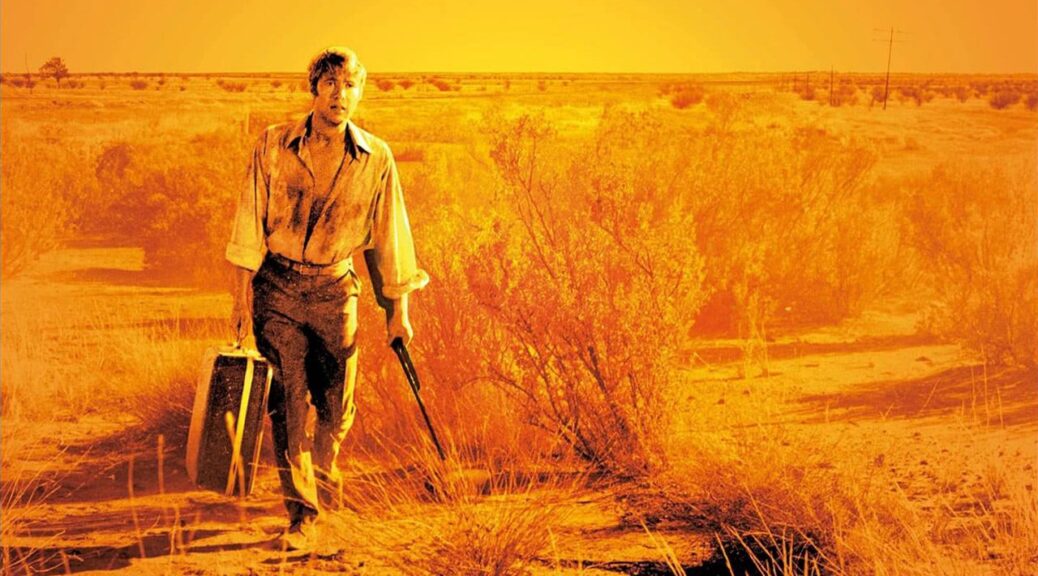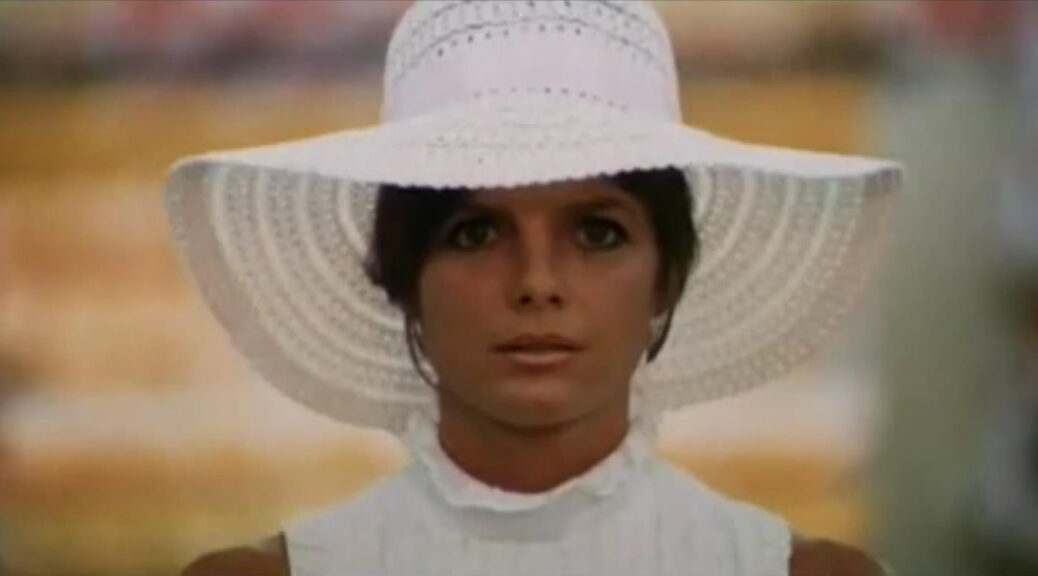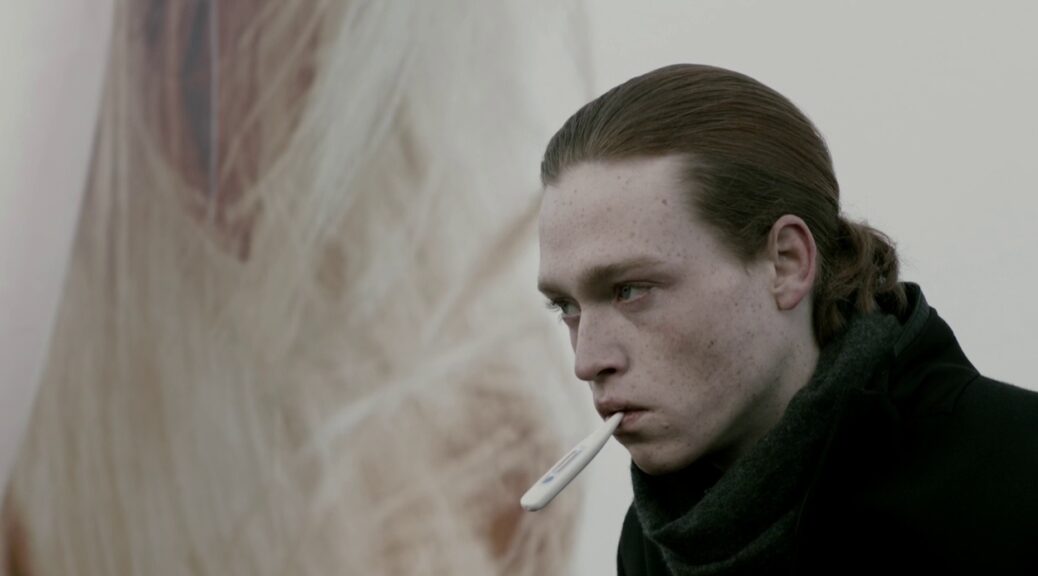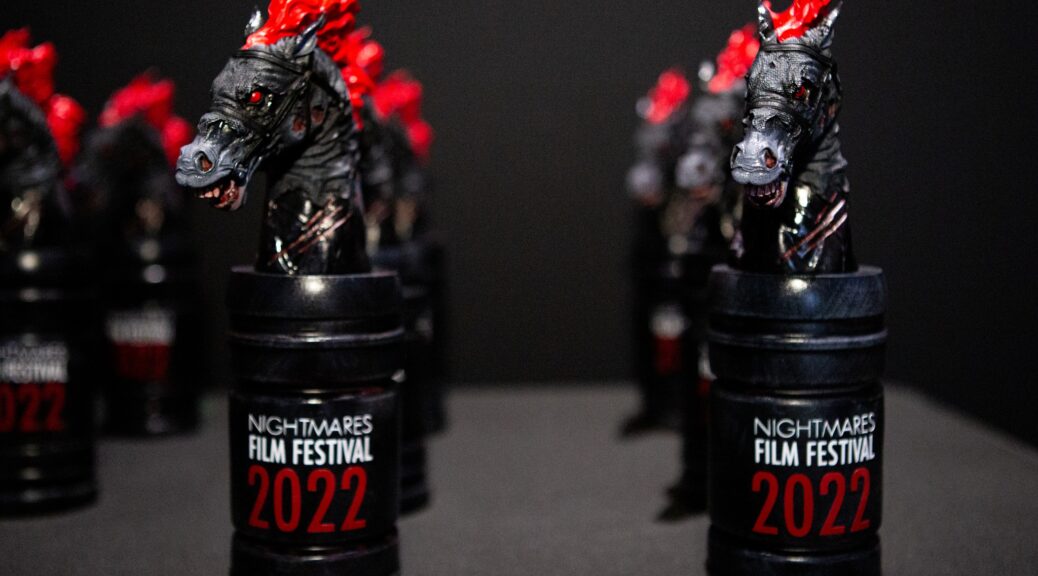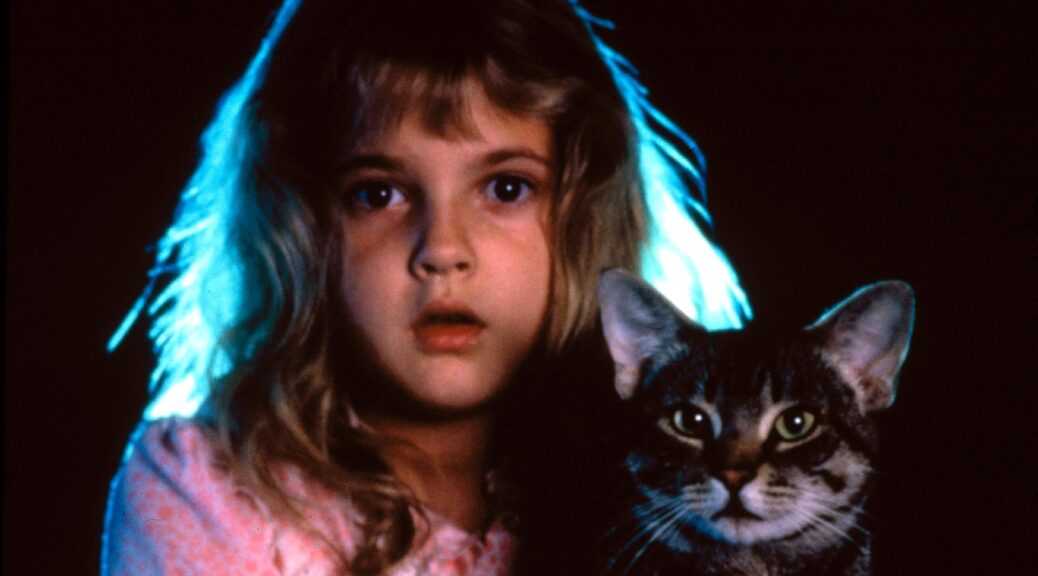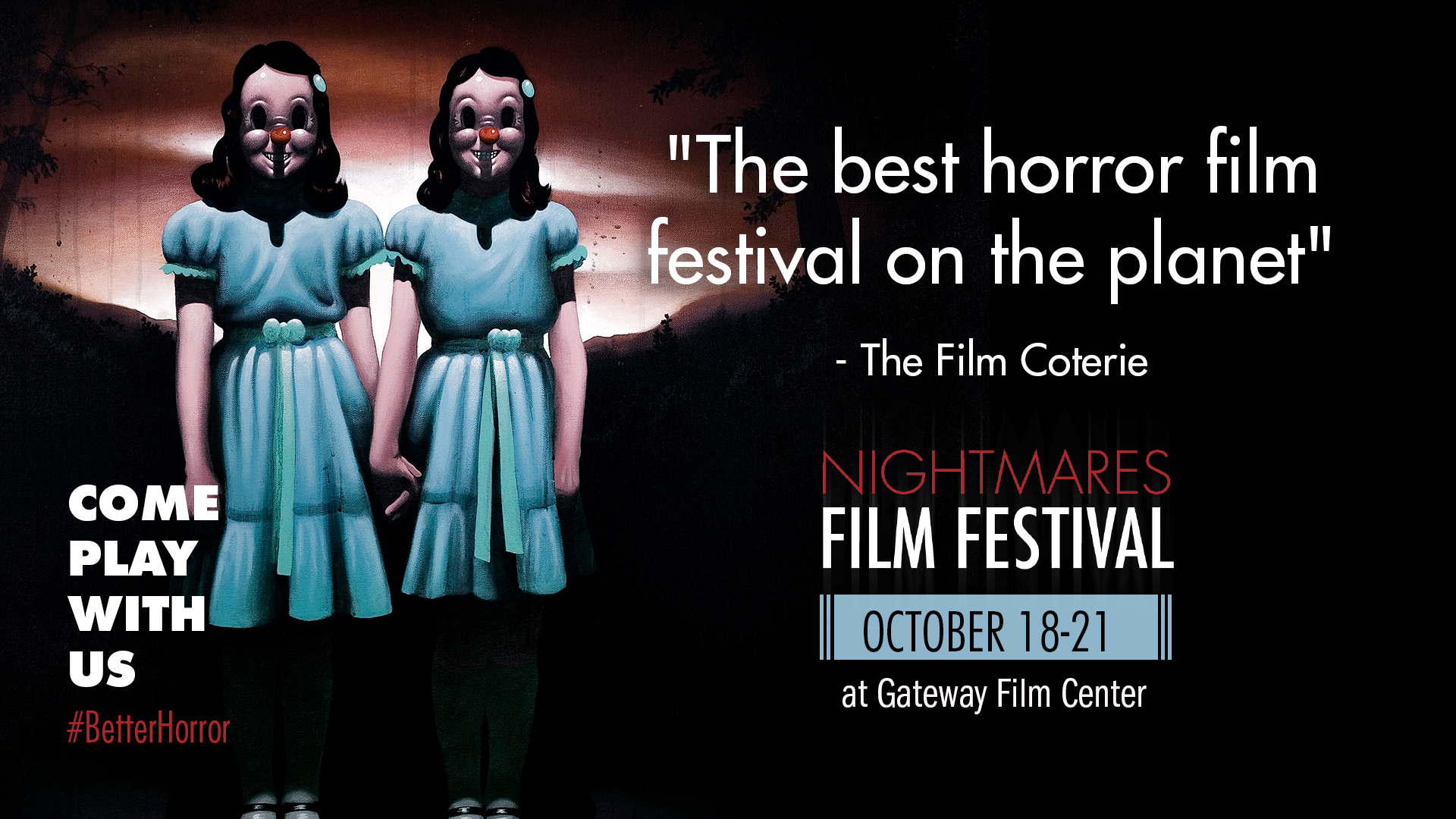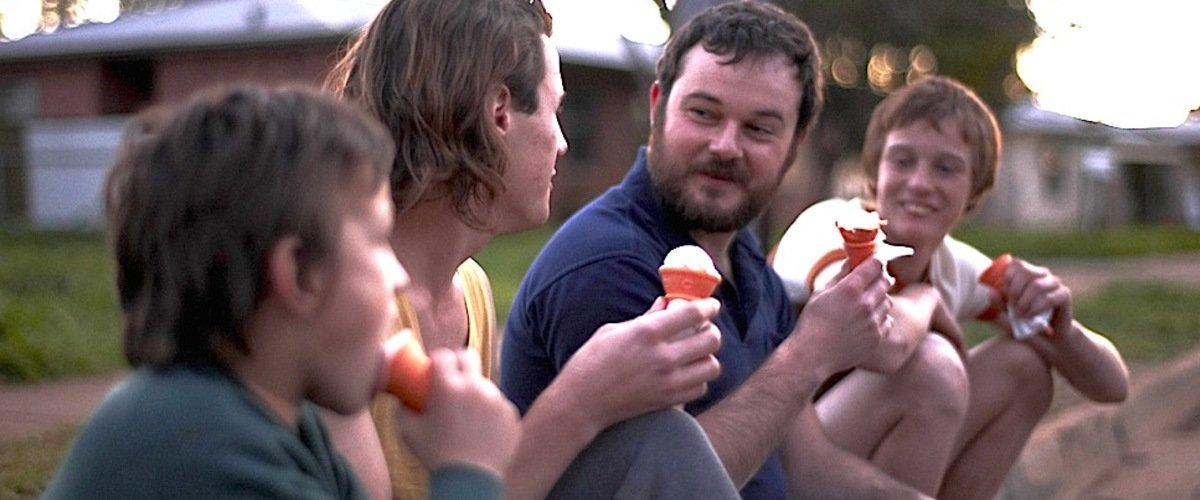NIGHTMARES FILM FESTIVAL UNVEILS COMPLETE 2018 PROGRAM
For horror fans, Christmas has come three months early — in the form of the Nightmares Film Festival 2018 program, presenting 24 features and 164 shorts over the four-day event running Oct. 18-21 at Gateway Film Center in Columbus.
True to its “#BetterHorror” motto, the program is jammed top to bottom with a mix of premier genre films from around the globe. Across the 188 films, there are dozens of world and North American premieres, a short accompanied by live in-theater music, projects from genre favorites, a Stephen King block and even a new documentary section.
“We’re on a never-ending, worldwide quest to discover the films that are reshaping the boundaries of horror — bold voices, new visions of terror, films that haunt you,” said co-founder and programmer Jason Tostevin. “That’s how we build every Nightmares, and this may be our best lineup yet.”
The features lineup is stacked with the world premieres of some of horror’s most anticipated new movies, including white-knuckle thriller The Final Interview from Fred Vogel (Toetag Pictures, August Underground); twisted kidnap nightmare The Bad Man from Scott Schirmer (Found, Harvest Lake); ‘80s-style horror anthology Skeletons in the Closet from Tony Wash (The Rake); and paranoia-fueled apocalypse tale Haven’s End from Chris Etheridge (Attack of the Morningside Monster).
North American feature debuts include The Head from the director of ThanksKilling, about a medieval monster hunter; Christmas horror-comedy The Night Sitter; action-horror creature feature Book of Monsters; and mistaken-identity comedy-thriller Kill Ben Lyk.
Horror legend Bill Lustig will open the festival with a brand new 4K restoration of his classic, Maniac. New cult director Jason Trost (The FP) will attend with The FP 2: Beats of Rage.
Nightmares also continues its tradition of presenting one of the top genre shorts programs in the world. This year’s short films include horror, thriller, midnight and horror-comedy blocks playing throughout the festival.
The festival also introduces its Recurring Nightmares section this year, a category that showcases the newest shorts by festival alums.
The fest’s legendary Midnight Mindfuck block also returns. The section, called “one of the most dangerous and challenging programs at any festival” (The Film Coterie), will present Trauma, a harrowing tale grounded in the darkest parts of Chilean history, and La Puta es Ciega (The Whore is Blind), a surreal and violent exploration of the streets of Mexico.
“Every aspect of Nightmares is filtered through the question, what would excite us as fans?,” said co-founder Chris Hamel. “We don’t think there’s a better experience for makers and lovers of horror than the four days of Nightmares Film Festival.”
The 13 finalists in both the Nightmares short and feature screenplay competitions were also announced. The ultimate winner in each competition will be announced at the awards ceremony on Oct. 20.
Nightmares begins Thursday, Oct. 18 at 7 p.m. and runs until Sunday night, Oct. 21. Fans who are ready to make the pilgrimage to Columbus, Ohio will find a limited number of passes still available for the festival at gatewayfilmcenter.org/NFF.
Hope Madden and George Wolf are proud to be among the jury panel for Nightmares Film Festival, one of the top horror film celebrations in the world. It has been the number-one rated genre film festival on submission platform FilmFreeway for 30 consecutive months.
SHORT SCREENPLAY FINALISTS
Boo – Rakefet Abergel
Mourning Meal – Jamal Hodge
Hiking Buddies – Megan Morrison
Living Memory – Stephen Graves
#dead – Derek Stewart
The Burning Dress – Sam Kolesnik
For Good Behavior – Ron Riekki
Air – Dalya Guerin
Invidia – Vanessa Wright
Minotaur – Michael Escobedo
Pancake Skank – Savannah Rodgers
The Callback – Sophie Hood
The Farm – Cate McLennan
FEATURE SCREENPLAY FINALISTS
Patience of Vultures – Greg Sisco
People of Merrit – Adam Pottle
The Shame Game – Greg Sisco
Rise of the Gulon – Matt Wildash
Left Of The Devil – Stephen Anderson
Bartleby Grimm’s Paranormal Elimination Service – Dan Kiely
Kelipot – Seth Nesenholtz
The Coldest Horizon – Jeffrey Howe
Throwback – Rachel Woolley
Resurrection Girl and the Curse of the Wendigo – Nathan Ludwig
The Caul – Sophia Cacciola & Michael J. Epstein
The Devil’s Gun – James Christopher
Residual – Tyler Christensen
HORROR FEATURES
The Bad Man
Skeletons in the Closet
Livescream
The Night Sitter
Book of Monsters
Maniac 4k
Confessions of a Serial Killer
The Head
Never Hike Alone
The Field Guide to Evil
THRILLER FEATURES
The Final Interview
Kill Ben Lyk
Clementina
Be My Cat: A Film For Anne
The LaPlace’s Demon
Alive
Betsy
Haven’s End
Dark Iris
MIDNIGHT FEATURES
Beats of Rage
Camp Death III in 2D!
Trauma
La Puta es Ciega
More Blood!
RECURRING NIGHTMARES A
Killing Giggles
The Unbearing
Let’s Play
Amy’s in the Freezer
One Hundred Thousand
Anniversary
Apartment 402
Enough
E-Bowla
Vampiras Satanicas II: The Death Bunny
42 Counts
RECURRING NIGHTMARES B
Galmi
Syphvania Grove
Rites of Vengeance
The Scarlet Vultures
Music Lesson
Thousand-Legged Terror
BFF Girls
Gut Punched
Basoan
HORROR SHORTS A
Ayuda
Bathroom Troll
Don’t Drink the Water
The After Party
Masks
Here There Be Monsters
Don’t Look Into Their Eyes
Heartless
El Cuco is Hungry
HORROR SHORTS B
Little
Save
Childer
Conductor
All You Can Carry
Made You Look
The Desolation Prize
Doggy See Evil
Spectres
Goodbye Old Friend
There’s a Monster Behind You
Blondie
HORROR SHORTS C
Ding Dong
Oscar’s Bell
Red Mosquito
Goodnight Gracie
Baghead
Wyrmwood
Avulsion
House Guests
The Last Seance
Three
HORROR SHORTS D
The Bloody Ballad of Squirt
The Chains
One Dark Night
Fears
Midnight Delivery
I Beat It
Mama’s Boy
Alien Death Fuck
Hell of a Day
Vonnis
The Dark Ward
Mystery Box
THRILLER SHORTS A
4EVR
Nocturne
The Noise of the Light
Short Leash
Instinct
Where’s Violet
Tutu Grande
THRILLER SHORTS B
Lady Hunters
Smiley’s
Headless Swans
A Death Story Called Girl
Dead Cool
You’ll Only Have Each Other
THRILLER SHORTS C
The Box
Salvatore
Witch’s Milk
Post Mortem Mary
Spurn
Esther
They Eat Your Teeth
They Wait for Us
MIDNIGHT SHORTS A
CLAW
Mayday
The Hex Dungeon
I Am Not a Monster
Gentlewoman’s Guide to Dom.
Blood Highway
Sock Monster
The Monster Within
Viral Blood
No Monkey
MIDNIGHT SHORTS B
Imagine
Fetish
The Jerry Show
Proceeds of Crime
Television
Mother Fucker
Ding-Dong
Night Terrors
The Thang
Rift
Häxan
MIDNIGHT SHORTS C
Tears of Apollo
Nightmare
The Mare
Mother Rabbit
Lipstick
Human Resources
Blood and Moonlight
Suicide Note
Enjoy the View
Freelancer
STEPHEN KING DOLLAR BABIES
The Things We Left Behind
I Am the Doorway
OHIO SHORTS A
The Borrower
Below the Trees
The Sewing Circle
The Choice
What Comes Out
Beyond Repair
Occupied
Hell to Pay
Who’s There
OHIO SHORTS B
Down the Hatchet
The Green Lady
Not From Around Here
Den
The Cat
House of Hell
Dodo
Cry Baby Bridge
SHORTS PAIRED WITH FEATURES
Marta
The Party’s Over
A Thing of Dreams
Mother of a Sacred Lamb
Dual
What Metal Girls are Into
My First Time
Canine
Latched
Offerings
Jingle Hell
Arret Pipi
Entropia
Helminth
Cabin Killer
American Undead
The Thing about Beecher’s Gate
Phototaxis
Best of Me
HORROR COMEDY SHORTS
Amigos
Netflix and Chill
Attack of Potato Clock
Foxwood
Rattle
Bitten
Heavy Flow
Sell Your Body
The Infection
Blood Sisters
Shit … They’re All Vampires
Late
There’s One Inside the House
